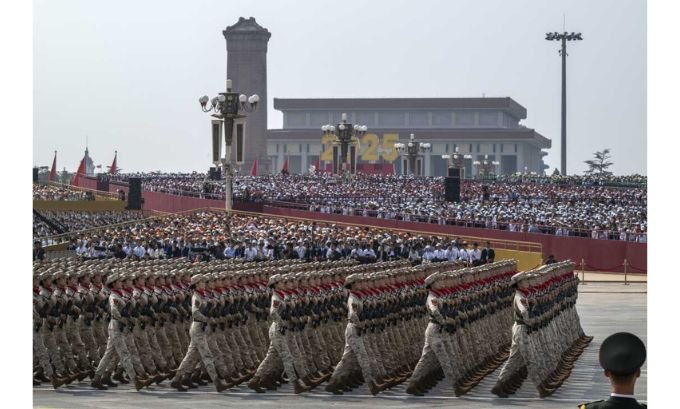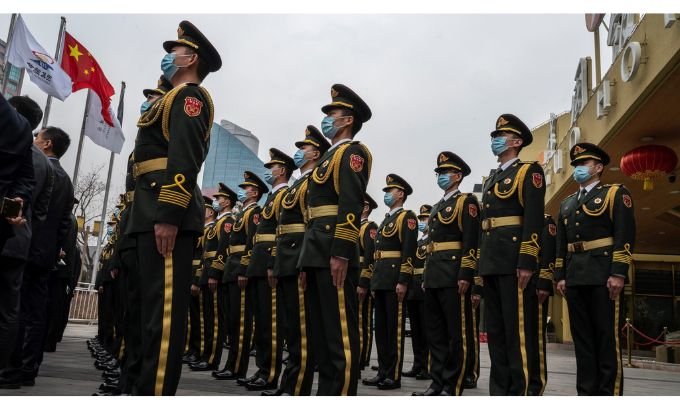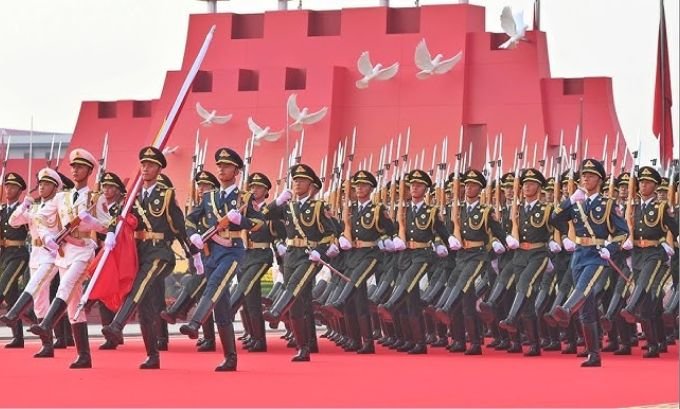China’s military modernization has reached a critical juncture. Recent intelligence assessments reveal an unprecedented acceleration in nuclear weapons development that fundamentally alters the global strategic landscape. The People’s Liberation Army (PLA) has embarked on the most significant military build up since the Cold War, transforming China from a minimal nuclear deterrent state into a potential nuclear peer competitor. This blog help you to learn about china military power report 2025.
This rapid expansion represents more than just numerical growth. China’s strategic approach encompasses comprehensive military modernization, from intercontinental ballistic missile (ICBM) infrastructure to advanced delivery systems. Understanding these developments is essential for policymakers, defense analysts, and anyone seeking to grasp the shifting dynamics of international security.
The implications extend far beyond military circles. As China approaches nuclear parity with established powers, regional allies must recalibrate their security strategies, while global arms control frameworks face unprecedented challenges.
The Nuclear Numbers Game: From Minimal to Major
China’s nuclear arsenal has undergone dramatic expansion since 2023. Intelligence estimates place the current stockpile at approximately 600 warheads, representing an addition of roughly 100 warheads annually over the past two years. This growth rate far exceeds previous projections and signals a fundamental shift in Chinese strategic thinking.
The trajectory appears even more striking when projected forward. Current estimates suggest China will reach 1,000 nuclear warheads by 2030, with potential expansion to 1,500 warheads by 2035. These figures would position China as the world’s third-largest nuclear power, closing the gap with the United States and Russia.
This expansion represents a departure from China’s historical “minimum deterrence” doctrine. For decades, Beijing maintained a relatively small nuclear force designed primarily to ensure second-strike capability. The current buildup suggests a transition toward a more robust nuclear strategy, potentially including counterforce capabilities and enhanced regional deterrence.
Infrastructure Development: Building for the Long Term
Beyond raw numbers, China has invested heavily in supporting infrastructure. New missile silos, command and control facilities, and manufacturing capabilities demonstrate long-term commitment to nuclear modernization. Satellite imagery has revealed construction of hundreds of new missile silos across multiple provinces, creating a distributed launch capability that enhances survivability.
The geographic distribution of these facilities reflects sophisticated strategic planning. By spreading assets across vast distances and hardening key installations, China reduces vulnerability to preemptive strikes while maintaining credible deterrent capabilities.

ICBM Modernization: Reaching Global Targets
China’s intercontinental ballistic missile capabilities have evolved significantly alongside nuclear expansion. The DF-41, China’s most advanced road-mobile ICBM, provides unprecedented range and payload flexibility. Multiple independently targetable reentry vehicles (MIRV) technology allows single missiles to engage multiple targets, multiplying strike capacity.
The development of hypersonic glide vehicles adds another layer of complexity to China’s strategic capabilities. These systems can maneuver during flight, potentially evading existing missile defense systems and complicating defensive planning for adversaries.
Rail-mobile and submarine-launched ballistic missiles further diversify China’s delivery options. The Type 094 nuclear submarines, while not matching the stealth capabilities of American or Russian counterparts, provide a credible sea-based deterrent that enhances overall strategic stability.
Defense Budget Growth: Funding Modernization
China’s defense spending reflects its strategic priorities. With annual increases averaging 7.2% in recent years, military expenditures have consistently outpaced GDP growth. This sustained investment enables comprehensive modernization across all service branches while supporting the nuclear expansion program.
The budget growth encompasses more than hardware acquisition. Personnel training, research and development, and operational readiness all benefit from increased funding. China’s defense industrial base has matured significantly, reducing dependence on foreign technology while accelerating indigenous innovation.
Comparative analysis reveals the scale of China’s commitment. While absolute spending remains below U.S. levels, the rate of growth and strategic focus suggest determined pursuit of military parity in key capability areas.
Regional Implications: Shifting Power Dynamics
China’s military modernization profoundly affects regional security calculations. Traditional U.S. allies in the Indo-Pacific face new strategic realities as China’s projection capabilities expand. Taiwan, Japan, South Korea, and Australia must adapt defense planning to account for enhanced Chinese capabilities.
The nuclear dimension adds particular complexity to regional dynamics. Extended deterrence relationships between the United States and its allies face new challenges as China develops more sophisticated nuclear options. Questions arise about the credibility of U.S. security guarantees in scenarios where China possesses robust nuclear capabilities.
Regional arms races may accelerate as neighboring states respond to Chinese military growth. Defense spending increases across Asia reflect these concerns, while discussions of independent nuclear capabilities emerge in previously non-nuclear states.

Strategic Competition: The New Great Power Dynamic
China’s military build up occurs within broader strategic competition with the United States. Nuclear modernization represents one element of this competition, alongside space capabilities, cyber warfare, and conventional forces. The interaction between these domains creates complex strategic dynamics.
Arms control frameworks developed during the Cold War struggle to accommodate China’s rise. Bilateral U.S.-Russia agreements cannot address trilateral nuclear competition, while China has historically remained outside formal arms control regimes. New approaches to strategic stability may require innovative diplomatic solutions.
The speed of China’s nuclear expansion challenges traditional strategic stability concepts. Rapid capability development can create uncertainty and potentially destabilizing dynamics, particularly if intentions remain unclear or if communication mechanisms prove inadequate.
Looking Ahead: Preparing for Strategic Parity
China’s nuclear expansion represents a defining challenge for international security. The prospect of three major nuclear powers fundamentally alters strategic calculations and requires new approaches to deterrence, arms control, and crisis management.
Diplomatic engagement remains essential even as military modernization continues. Establishing communication channels, developing crisis management mechanisms, and exploring arms control possibilities could help manage risks associated with strategic competition.
Regional allies must adapt to new realities while maintaining effective deterrence. This may require enhanced capabilities, updated strategies, and strengthened alliance relationships to address evolving threats.
The international community faces the challenge of managing strategic competition while avoiding destabilizing arms races. Careful analysis, measured responses, and sustained diplomatic engagement will prove essential as China’s military power continues expanding throughout the remainder of this decade.


